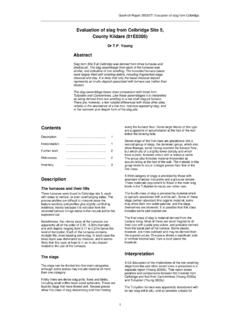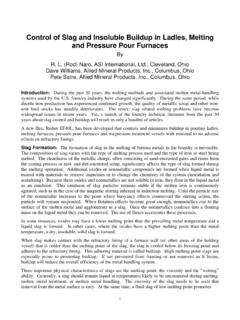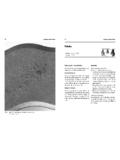Transcription of Safety Data Sheet - Black Diamond Abrasives by US Minerals
1 Safety data Sheet Material Name: Coal Slag _____ Page 1 of 7 Issue Date 9/01/2017 Revision Print Date: 9/7/17 * * *Section 1 - IDENTIFICATION* * * Mat erial Name: Coal Slag Trade Name: Black Magnum , Black Diamond Recommended Use: Abrasives , Roofing Granules and other aggregate uses. Restrictions on Use: None known. Manufacturer Information US Minerals , Inc. Phone: (708) 623- 1935 18635 West Creek Drive Fax: 219-864- 4675 Tinley Park, IL 60477 Emergency # (800) 803-2803; (800) 424-9300 (ChemTrec) * * *Section 2 - HAZARDS IDENTIFICATION* * * OSHA (29 CFR ) Classification of Coal Slag (CAS # 68476- 96- 0): Hazard Symbol Hazard Classification Signal Word Hazard Statement Single Target Organ Toxicity (STOT) Repeated Exposure Category 2 (Respiratory System) Warning May cause damage to lungs (pulmonary fibrosis) through prolonged or repeated exposure.
2 Precautionary Statements Prevention Response Disposal Do not breathe dusts. Get medical advice/attention if you feel unwell. Dispose of contents in accordance with federal, state/provincial and local regulations Hazards not Otherwise Classified: None Known. Unknown Acute Toxicity Statement (Mixture): None Known. * * *Section 3 - COMPOSITION / INFORMATION ON INGREDIENTS* * * CAS Number Components of Coal Slag Percent % 60676-86-0 Amorphous Fused Silicon Dioxide 40- 501344-28-1 Aluminum oxide 18- 221309-37-1 Iron oxide 5- 121305-78-8 Calcium Oxide 15- 2212136-45-7 Potassium Oxide 0-113463-67-7 Titanium Oxide 1-21309-48-4 Magnesium Oxide 3-51313-59-3 Sodium Oxide 0-114808-60-7 Crystalline Silica as Quartz 0- Crystalline Silica as Cristobalite < 7440-41-7 Beryllium 0- to View Spanish data Sheet Material Name: Coal Slag _____ Page 2 of 7 Issue Date 9/01/2017 Revision Print Date: 9/7/17 * * *Section 4 - FIRST AID MEASURES* * * Description of Necessary Measures Inhalation Remove to fresh air.
3 Get medical attention if you feel unwell. Skin Product is not a skin sensitizer. Wash skin thoroughly with water and soap. Remove contaminated clothing. Get medical advice/attention if symptoms occur. Eyes : Immediately flush eyes with water for at least several minutes. Remove contact lenses, if present and easy to do. Do not rub eyes. Continue rinsing. If irritation persists, get medical attention. Ingestion If a large amount is swallowed, rinse out mouth. Give water to drink. Do not induce vomiting. Get medical attention if symptoms occur. Most Important Symptoms/Effects, Acute and Delayed (Chronic) Acute Effects Inhalation: Excessive exposure to high concentrations of dust may cause irritation to the mucous membranes of the upper respiratory tract.
4 Eye: Excessive exposure to high concentrations of dust may cause irritation to the eyes. Skin: Skin contact with dusts may cause irritation or dermatitis. Ingestion: Ingestion of dust may cause nausea and/or vomiting. Chronic Effects Prolonged and repeated inhalation exposure to excessive concentrations of dusts may cause pulmonary fibrosis. Immediate Medical Attention and Special Treatment: Treat symptomatically. * * *Section 5 - FIRE FIGHTING MEASURES* * * Suitable (and Unsuitable) Extinguishing Media Use extinguishing agents appropriate for surrounding fire. Specific Hazards Arising from the Chemical Not applicable for solid product. Hazardous Combustion Products None known Special Protective Equipment and Precautions for Firefighters Wear full protective firefighting gear including self -contained breathing apparatus (SCBA) for protection against possible exposure to fumes and/or smoke from the fire.
5 Do not release runoff from fire control methods to sewers or waterways. * * *Section 6 - ACCIDENTAL RELEASE MEASURES* * * Personal Precautions, Protective Equipment and Emergency Procedures For spills involving finely divided particles, clean-up personnel should be protected against contact with eyes and skin. If material is in a dry state, avoid inhalation of dust. Fine, dry material should be removed by vacuuming or wet weeping methods to prevent spreading of dust. Avoid use compressed air to air sweep surfaces. Do not release into sewers or waterways. Methods and Materials for Containment and Cleaning Up Collect spilled material in appropriate, labeled container for recovery or disposal in accordance with federal, state/provincial, and local regulations.
6 Safety data Sheet Material Name: Coal Slag _____ Page 3 of 7 Issue Date 9/01/2017 Revision Print Date: 9/7/17 * * *Section 7 - HANDLING AND STORAGE* * * Precautions for Safe Handling Do not breathe dust. Wear protective gloves / protective clothing / eye protection, as applicable. Emergency Safety shower and eye wash stations should be present. Conditions for Safe Storage, including any Incompatibilities Store away from incompatibles such as strong acids and bases. * * *Section 8 - EXPOSURE CONTROLS / PERSONAL PROTECTION* * * Component Exposure Limits Iron oxide (CAS # 1309- 37- 1) ACGIH: 5 mg/m3 TWA (respirable fraction) NIOSH: 5 mg/m3 TWA (as Fe, dust and fume) OSHA: 10 mg/m3 TWA (fume); 15 mg/m3 TWA (total dust); 5 mg/m3 TWA (respirable fraction) Mexico: 5 mg/m3 TWA LMPE-PPT 10 mg/m3 STEL [LMPE-CT] (as Fe) Amorphous Fused Silicon Dioxide (CAS # 60676-86- 0) NIOSH: 6 mg/m3 TWA OSHA: 80 mg/m3 / % SiO2 TWA Calcium oxide (CAS # 1305- 78- 8) ACGIH: 2 mg/m3 TWA NIOSH: 2 mg/m3 TWA 25 mg/m3 IDLH OSHA: 5 mg/m3 TWA Mexico: 2 mg/m3 TWA LMPE-PPT Aluminum oxide (CAS # 1344- 28- 1) OSHA: 15 mg/m3 TWA (total dust).
7 5 mg/m3 TWA (respirable fraction) Mexico: 10 mg/m3 TWA LMPE-PPT Appropriate Engineering Controls Local exhaust ventilation should be used to control the emissions of air contaminants below recommended exposure limits. General dilution ventilation may assist with the reduction of air contaminant concentrations. Emergency eye wash stations and deluge Safety showers should be available in the work area. Individual Protection Measures: Respiratory Protection: Seek professional advice prior to respirator selection and use. Follow OSHA respirator regulations (29 CFR ) and, if necessary, use only a NIOSH-approved respirator. Select respirator based on its suitability to provide adequate worker protection for given working conditions, level of airborne contamination, and presence of sufficient oxygen.
8 Concentration in air of the various contaminants determines the extent of respiratory protection needed. Half -face, negative-pressure, air-purifying respirator equipped with P100 filter is acceptable for concentrations up to 10 times the exposure limit. Full-face, negative-pressure, air-purifying respirator equipped with P100 filter is acceptable for concentrations up to 50 times the exposure limit. Protection by air -purifying negative-pressure and powered air respirators is limited. Use a positive-pressure-demand, full- face, supplied air respirator or self-contained breathing apparatus (SCBA) for concentrations above 50 times the exposure limit. If exposure is above the IDLH (immediately dangerous to life or health) for any of the constituents, or there is a possibility of an uncontrolled release or exposure levels are unknown, then use a positive-demand, full-face, supplied air respirator with escape bottle or SCBA.
9 Warning! Air -purifying respirators both negative-pressure, and powered-air do not protect workers in oxygen-deficient atmospheres. Safety data Sheet Material Name: Coal Slag _____ Page 4 of 7 Issue Date 9/01/2017 Revision Print Date: 9/7/17 Eyes: Wear eye protection/face protection. Chemical goggles, face shields or glasses should be worn to prevent eye contact. Contact lenses should not be worn where particulate exposure to this material is likely. Skin:Persons handling this product should wear appropriate clothing to prevent skin contact. Take off contaminated clothing and wash before reuse. Contaminated work clothing should not be allowed out of the workplace. Wear protective gloves. * * *Section 9 - PHYSICAL AND CHEMICAL PROPERTIES* * * Physical State: Coarse Solid Appearance: Black , granular shiny solid Color: Black Physical Form: Solid Odor: No characteristic odor Odor Threshold: Not available pH: Not available Melting Point: Not available Boiling Point: Not applicable Flash Point: Not applicable Decomposition: Not available Evaporation Rate: Not available Vapor Density (air = 1): Not applicable Upper/Lower Flammability or Explosive Limits Not applicable Specific Gravity (water = 1): Not available Vapor Pressure: Not applicable Log KOW: Not available Density: Not available Viscosity Not available Water Solubility.
10 Marginal * * *Section 10 - STABILITY AND REACTIVITY* * * Reactivity No reactivity hazard is expected. Chemical Stability Coal slag is stable at normal temperature and pressure. Possibility of Hazardous Reactions None Known. Conditions to Avoid Storage with incompatible materials. Flames and ignition sources where dust can accumulate. Incompatible Materials Strong acids or bases Hazardous Decomposition Products Oxides of carbon and metal oxides may be released at elevated temperatures. * * * Section 11 - TOXICOLOGICAL INFORMATION * * *Acute Toxicity Values: Coal Slag Oral LD50 Rat >2, 000 mg/kgDermal LD50 Rabbit >2, 000 mg/kgIron Oxide Oral LD50 Rat >10,000 mg/kgAmorphous Silicon Dioxide Oral LD50 Rat >5,000 mg/kgDermal LD50 Rabbit >2, 000 mg/kgAluminum Oxide Oral LD50 Rat >5,000 mg/kgCalcium Oxide Oral LD50 Rat >2,000 mg/kgNo Skin (Dermal) Irritation data has been determined for Coal Slag as a mixture.






